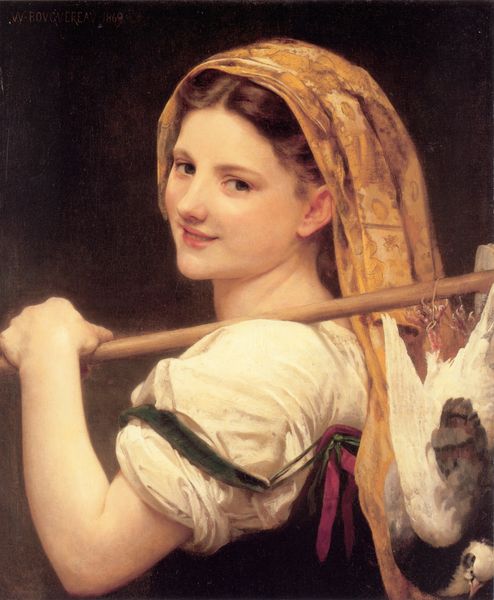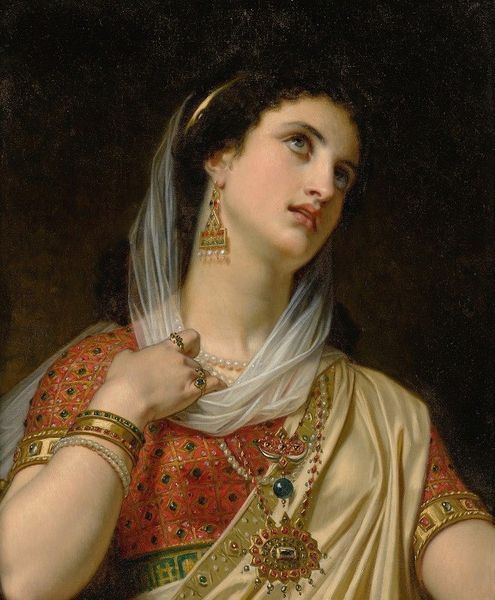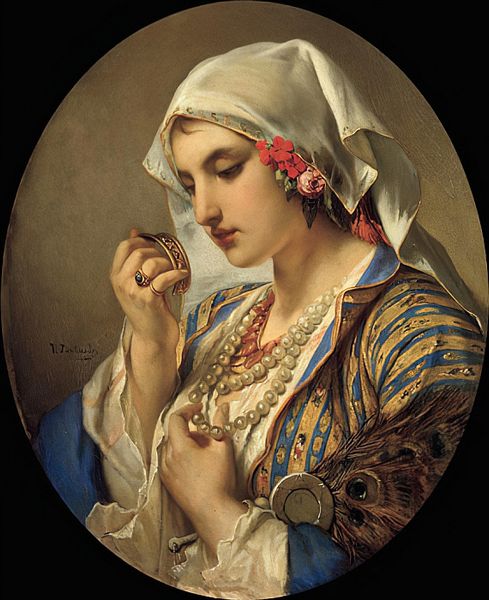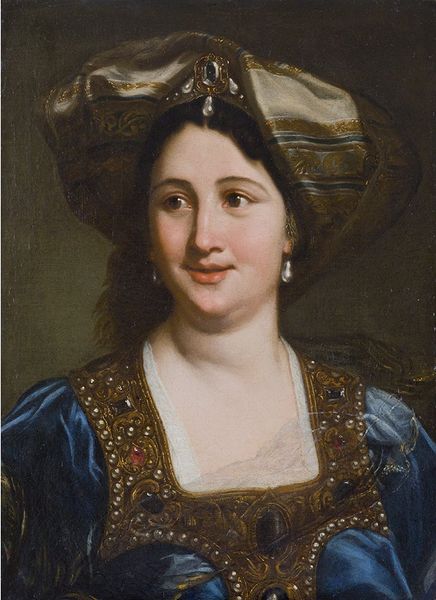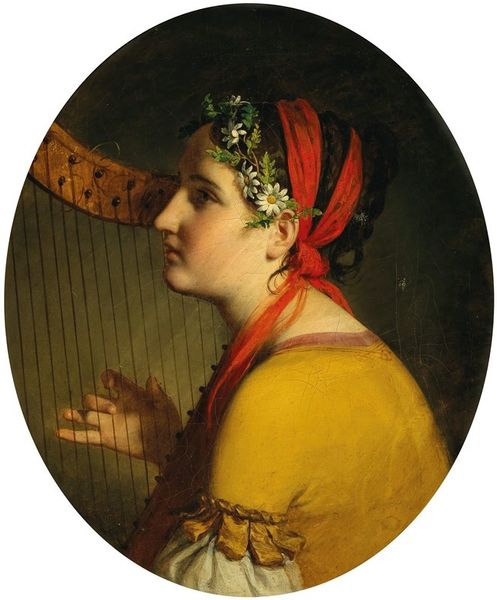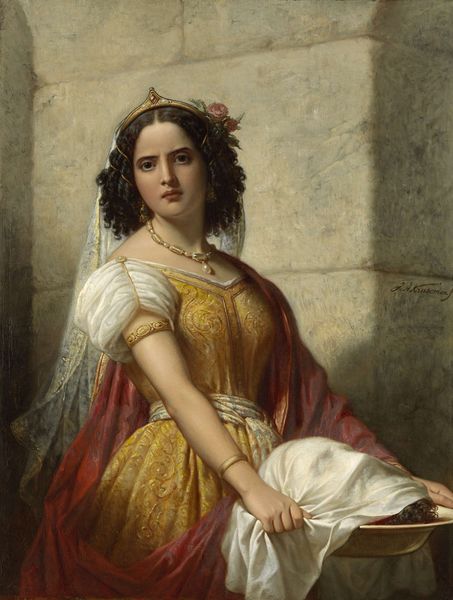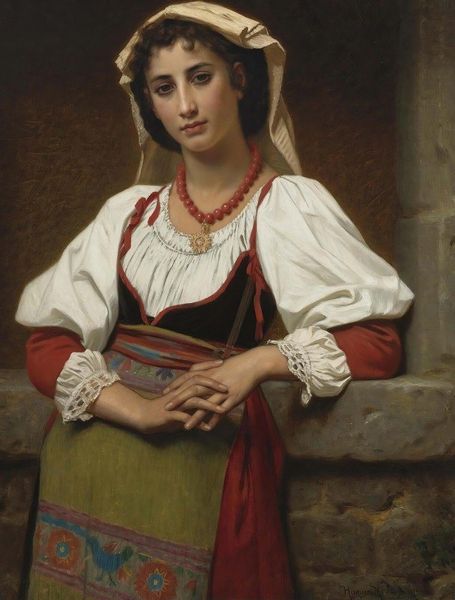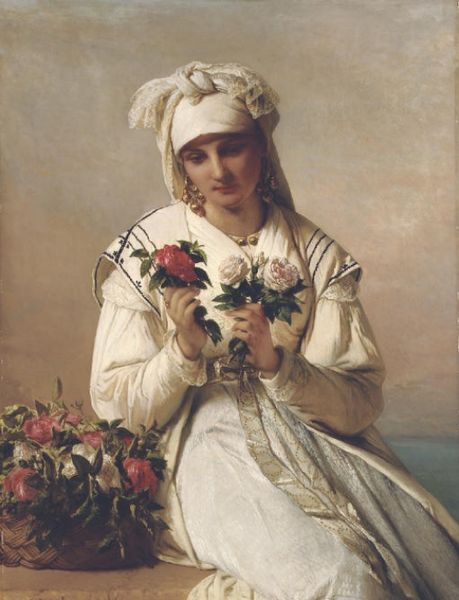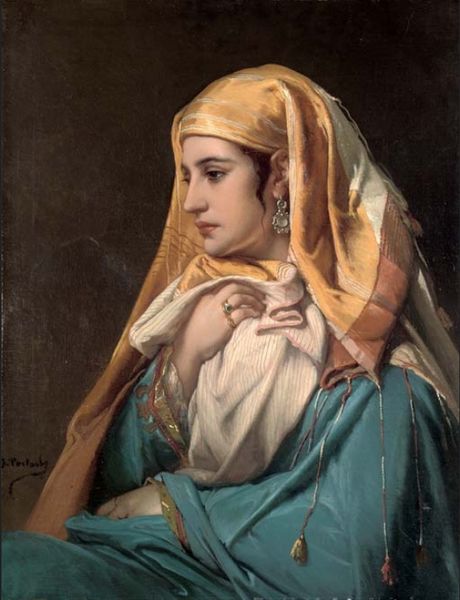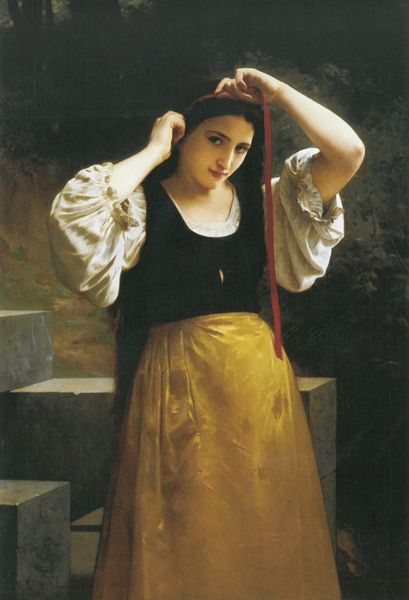
Copyright: Public Domain: Artvee
Curator: At first glance, this portrait exudes a serene, almost dreamlike quality. The young woman's soft features and gentle gaze are immediately captivating. Editor: You're right. The work before us, William Bouguereau's "The Little Knitter," painted in 1881, exemplifies the artist's embrace of academic art and romanticism. It is such a telling insight into late 19th century European conventions and aesthetics around representing women. Curator: I find myself particularly drawn to the color red—the headdress, necklace, and knitting project draw the eye. In some cultures, red symbolizes vitality and skill; in others, duty and action. The red combined with the gold in her headscarf lends an air of both prosperity and domesticity to this otherwise fairly unassuming woman. Editor: Precisely. Bouguereau had a way of idealizing and aestheticizing his peasant subjects, often casting them in a virtuous and classical light. We must remember though, there are political implications here; such paintings often ignored the difficult socioeconomic realities faced by working-class individuals. This portrait participates in the myth-making of an idyllic pastoral lifestyle. Curator: But it's more complex than a simple idealization, don't you think? There is a sense of quiet strength. Knitting, historically associated with domesticity, has a transformative quality when adopted by men and women who seek to change what labour, femininity or class signifies. I mean, this little knitter looks like she's contributing something. Editor: Absolutely. This type of work did find great success with the increasingly affluent bourgeoisie and industrial class, helping them craft an image of moral responsibility during times of enormous social transformation. And we continue today debating and evaluating their appeal, their place, and influence on the construction of socio-historical narratives. Curator: True, there’s something deeply compelling, and perhaps a bit troubling, about how beauty and virtue are so closely intertwined here. But seeing this girl now offers us new entryways into understanding craft, social hierarchy, and labour. Editor: A fascinating case study, truly! The impact that artworks have on society, generation upon generation, certainly merits our keen attention.
Comments
No comments
Be the first to comment and join the conversation on the ultimate creative platform.
